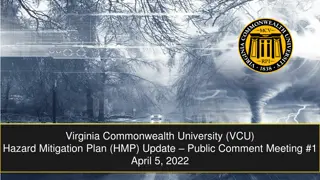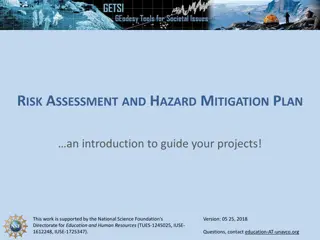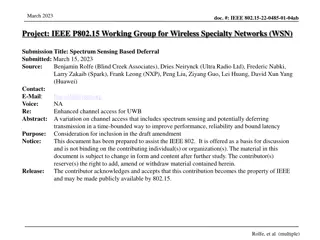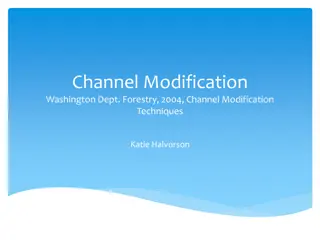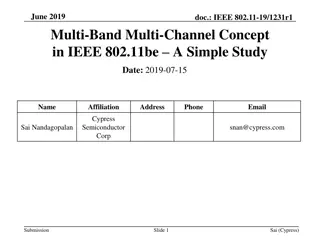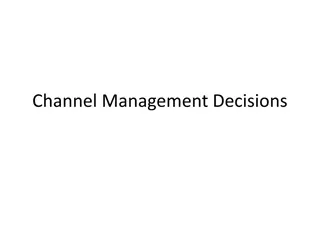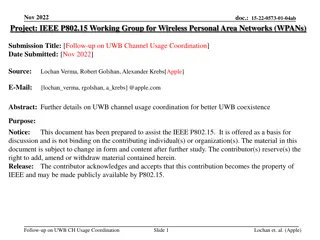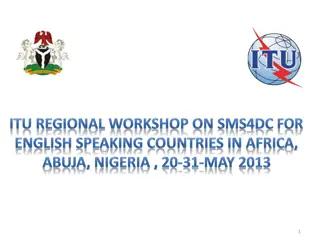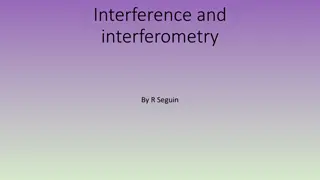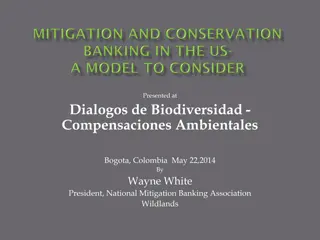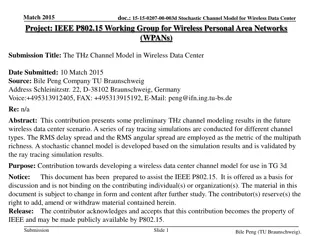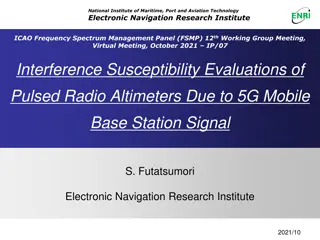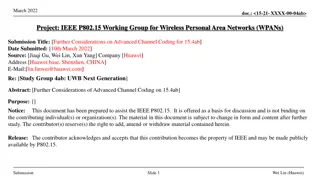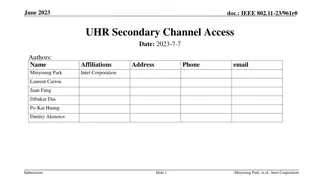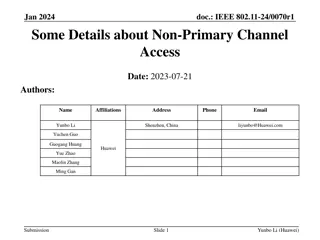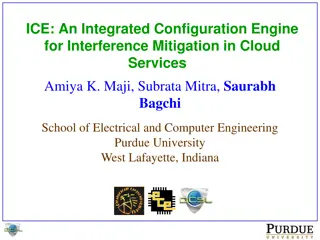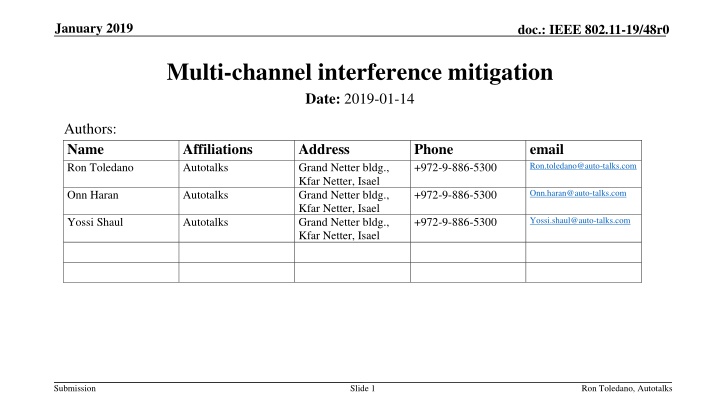
Mitigating Multi-Channel Interference in IEEE 802.11 Networks
Learn about the challenges of multi-channel interference in IEEE 802.11 networks and explore strategies for mitigation. Discover how unconstrained and constrained channel operations impact transmission quality and effectiveness in this detailed presentation by Ron Toledano from Autotalks.
Download Presentation

Please find below an Image/Link to download the presentation.
The content on the website is provided AS IS for your information and personal use only. It may not be sold, licensed, or shared on other websites without obtaining consent from the author. If you encounter any issues during the download, it is possible that the publisher has removed the file from their server.
You are allowed to download the files provided on this website for personal or commercial use, subject to the condition that they are used lawfully. All files are the property of their respective owners.
The content on the website is provided AS IS for your information and personal use only. It may not be sold, licensed, or shared on other websites without obtaining consent from the author.
E N D
Presentation Transcript
January 2019 doc.: IEEE 802.11-19/48r0 Multi-channel interference mitigation Date: 2019-01-14 Authors: Name Ron Toledano Affiliations Autotalks Address Grand Netter bldg., Kfar Netter, Isael Grand Netter bldg., Kfar Netter, Isael Grand Netter bldg., Kfar Netter, Isael Phone +972-9-886-5300 email Ron.toledano@auto-talks.com Onn.haran@auto-talks.com Onn Haran Autotalks +972-9-886-5300 Yossi.shaul@auto-talks.com Yossi Shaul Autotalks +972-9-886-5300 Submission Slide 1 Ron Toledano, Autotalks
January 2019 doc.: IEEE 802.11-19/48r0 Abstract Interferences resulted from multi-channel operation reduce the effective communication range Shown in IEEE802.11-18/1928r0 In multi-channel environment, each channel is used independently carrying traffic with arbitrary profile Synchronizing channels, using carrier-aggregation like scheme, isn t applicable In this presentation we suggest multi-channel interference mitigation scheme Submission Slide 2 Ron Toledano, Autotalks
January 2019 doc.: IEEE 802.11-19/48r0 Multiple Channels Interferences - Recap Interference free multi-channel operation can t be assured Submission Slide 3 Ron Toledano, Autotalks
January 2019 doc.: IEEE 802.11-19/48r0 Unconstrained Operation Chaos TX Ch. 2 TX Ch. 1 Transmission ignores activity in other channels As a result, two close vehicles can transmit concurrently All vehicles in proximity of one channel transmission will not receive the other channel transmission, despite its relevancy and relative short distance Submission Slide 4 Ron Toledano, Autotalks
January 2019 doc.: IEEE 802.11-19/48r0 Constrained Operation Spatial Coordination TX Ch. 2 TX Ch. 1 Transmission considers activity in other channels Concurrent transmission from close vehicles is prevented Important messages aren t harmed Submission Slide 5 Ron Toledano, Autotalks
January 2019 doc.: IEEE 802.11-19/48r0 Concept of Operation Within Ch1. interference range Delay Ch. 2 transmission Outside Ch1. interference range Ch. 2 can transmit TX Ch. 2 TX Ch. 1 Submission Slide 6 Ron Toledano, Autotalks
January 2019 doc.: IEEE 802.11-19/48r0 Transmission Flow Multi-channel interfere? No Yes Transmit Delay transmission Interference is quantified by RSSI level, reflecting target communication range Target range is determined by use-case, commonly 300 meters for safety Real-time transmission deferral decision is needed V2X upper layer can configure decision parameters, but can t perform real-time RSSI comparisons MAC can perform real-time RSSI comparisons based on information from PHY Submission Slide 7 Ron Toledano, Autotalks
January 2019 doc.: IEEE 802.11-19/48r0 Multi-Channel Interference Mitigation Layer Adding MAC layer is suggested Required by any system: single radio or multi-radio V2X upper layer MAC Multi-channel interference mitigation PHY Submission Slide 8 Ron Toledano, Autotalks
January 2019 doc.: IEEE 802.11-19/48r0 RSSI Based Decision RSSI is indicative to distance Upon transmit request, adjacent packet RSSI is compared with threshold If above threshold Interference too strong. Vehicle is likely too close Delay transmission If below threshold Interference not harmful. Vehicle is likely far enough Transmit RSSI varies based on environment For example, truck on road, curve, building, etc V2X upper layer can adjust the threshold based on expected RSSI in target range Submission Slide 9 Ron Toledano, Autotalks
January 2019 doc.: IEEE 802.11-19/48r0 Adjacent Channel RSSI Measurement Low complexity adjacent channel RSSI measurement is feasible Deducting energy based on main channel Measuring energy on a wider span Measurement performance targets can be set, such as detection of interferences stronger than -65dBm Adjacent Ch. Main Ch. Adjacent Ch. Estimation based on main channel Wide-span energy measurement Submission Slide 10 Ron Toledano, Autotalks
January 2019 doc.: IEEE 802.11-19/48r0 Zoom on Interface V2X upper layer Config (Adjacent channel RSSI threshold(s)) Additional channels Multi-channel interference mitigation Adjacent channel RSSI(s) Delay TX PHY Submission Slide 11 Ron Toledano, Autotalks
January 2019 doc.: IEEE 802.11-19/48r0 Summary Multi-channel interference mitigation would enable reliable multi-channel operation Achieving efficient spatial utilization Suggested mitigation scheme delays transmission based on adjacent channels RSSI PHY estimates RSSI of adjacent channels RSSI value(s) compared with threshold(s) Threshold(s) is configured by V2X upper layer Submission Slide 12 Ron Toledano, Autotalks



